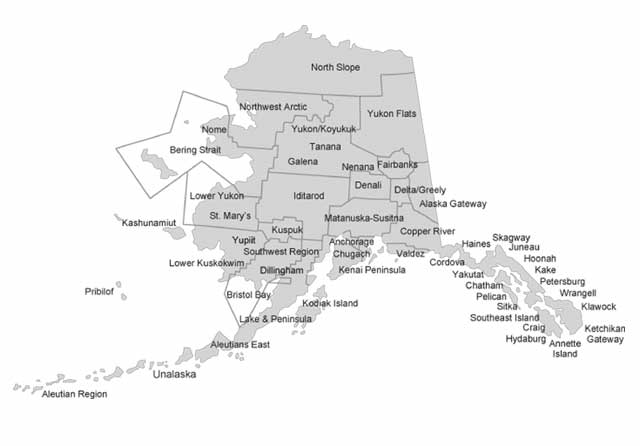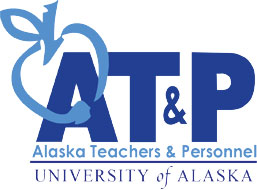

Alaska School Districts
There are 54 school districts and four other educational
service agencies in Alaska that hire certified teachers and
administrators as part of the Alaska Teachers and Personnel
consortium. All job openings for these organizations display
in the links below, and through the ATP Job
Bank interface of currently active jobs.
Districts and Locations
The "road system" in the state includes only a small
portion of the state. Use the About
Alaska page to learn more, as well as the description
of Alaska's
five regions.
Because the state is so geographically diverse, it's a good idea to use a map to understand a little more about where each is located. You can use the map below to locate Alaska's school districts. All but six have at least some type of website, and we've linked their names to each district's main page.
A school district's website is potentially an excellent way to get a feel what life is like for teachers and administrators working there now. Look for clues about what each organization stresses in its programs, approaches and interactions with the public.
| Alaska School Districts:
Locations |
 |
There are several districts each year that have their own
Applitrack database system which display their listings in
our search results, but the links
go
to
a separate system. These are sometimes referred
to as the Big Six Districts, and currently include
Anchorage, Mat Su, Kenai, Fairbanks and Juneau and Kodiak.
See our
FAQ sheet on this for more information on how ATP's
Applitrack system and the other districts interact.
Alaska's approximately 500 public schools are organized within 54 school districts and a state residential boarding academy. These include 34 city and borough school districts and 19 Regional Educational Attendance Areas. REAAs serve students living in towns and villages in politically unorganized areas of rural Alaska. Alaska definitions of "city” and "borough” are not necessarily indicative of an urban setting, but refer to form of political organization.
Alaska schools vary greatly in size. High schools in Anchorage, the state’s largest city, may serve more than 2,000 students. Schools in other urban areas such as Juneau, Fairbanks, the Kenai Peninsula, or the Matanuska-Susitna Valley may serve hundreds and are similar to schools in small cities in the rest of the United States.
Many schools in rural areas are small, some with 20 or fewer students at a variety of grade levels.
Alaska School Districts & ATP Consortium Members
The following chart provides a list of each ATP school
district or educational organization, a link to the a list
of any current job openings, and identifies it by
which region
of Alaska it is located in. Any district
with a red * next to it
is one of the districts with their own database system.
Note: Although the state boarding school in Sitka, Mt. Edgecumbe High School, is included in the total of 54, a number of statewide correspondence schools are operated directly by districts, and are therefore not counted as separate districts themselves.
- Alaska EED maintains a School District Directory page on their website. This has been called their "Rolodex" for many years.
- EED also maintains a list of current Alaska School District Contacts & Websites. These change slightly each year as ISPs change.
- They also have a list of current Alaska Superintendents
